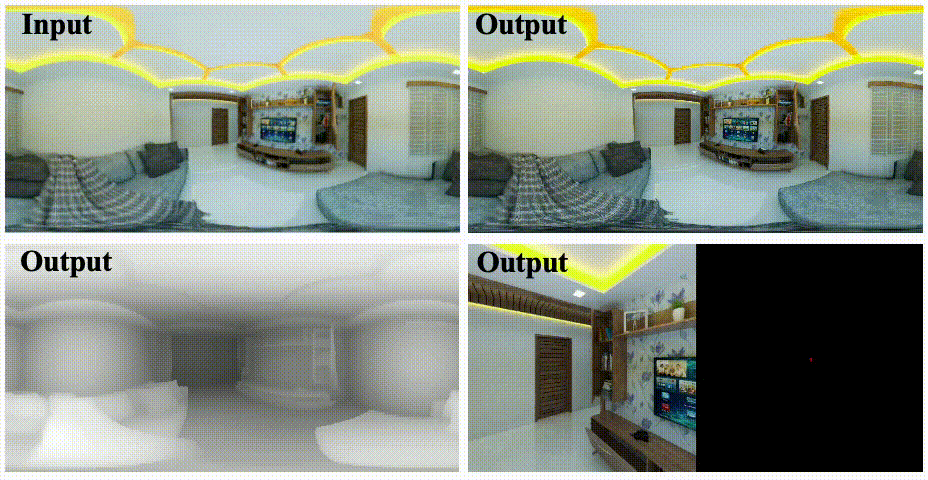PERF: Panoramic Neural Radiance Field from a Single Panorama
Neural Radiance Field (NeRF) has achieved substantial progress in novel view synthesis given multi-view images. Recently, some works have attempted to train a NeRF from a single image with 3D priors. They mainly focus on a limited field of view with a few occlusions, which greatly limits their scalability to real-world 360-degree panoramic scenarios with large-size occlusions. In this paper, we present PERF, a 360-degree novel view synthesis framework that trains a panoramic neural radiance field from a single panorama. Notably, PERF allows 3D roaming in a complex scene without expensive and tedious image collection. To achieve this goal, we propose a novel collaborative RGBD inpainting method and a progressive inpainting-and-erasing method to lift up a 360-degree 2D scene to a 3D scene. Specifically, we first predict a panoramic depth map as initialization given a single panorama and reconstruct visible 3D regions with volume rendering. Then we introduce a collaborative RGBD inpainting approach into a NeRF for completing RGB images and depth maps from random views, which is derived from an RGB Stable Diffusion model and a monocular depth estimator. Finally, we introduce an inpainting-and-erasing strategy to avoid inconsistent geometry between a newly-sampled view and reference views. The two components are integrated into the learning of NeRFs in a unified optimization framework and achieve promising results. Extensive experiments on Replica and a new dataset PERF-in-the-wild demonstrate the superiority of our PERF over state-of-the-art methods. Our PERF can be widely used for real-world applications, such as panorama-to-3D, text-to-3D, and 3D scene stylization applications. Project page and code are available at https://perf-project.github.io/ and https://github.com/perf-project/PeRF.
PDF Abstract



 Replica
Replica